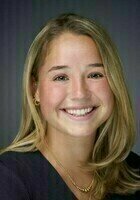All Algebra II Resources
Example Questions
Example Question #2221 : Mathematical Relationships And Basic Graphs
Simplify the following expression:
Simplify the following expression:
Let's break this into parts.
First, realize that adding a negative number is the same as subtracting that number:
Next, subtract the 88:
Our answer must be negative, because 88 is bigger than 84. Therefore our answer is -4
Example Question #14 : Elementary Operations
If 


When we add the functions together, we can only add terms that have matching exponents. First, let's add the terms that are squared:
Next, let's do the linear terms:
Finally, we add the constants:
Then we collect all the terms back together:
Example Question #15 : Elementary Operations
Add the following numbers:
Add the ones digits.
The tens place is the carry over.
Add the tens digits with the carry over.
The tens place is the carry over for the next calculation.
Add the hundreds place with the carryover.
Combine this number with the ones digits of the previous calculations.
The answer is:
Example Question #16 : Elementary Operations
Add the following numbers:
Add the ones digits.
Add the tens digits.
The carryover is the tens digit.
Add the hundreds digits with the carryover.
Add the thousands digits.
Combine this number with the ones digits of the previous calculations.
The answer is:
Example Question #11 : Addition And Subtraction
Add the following numbers:
Add the ones digits.
The carryover is the tens digit.
Add the tens digits with the carryover.
The carryover is the tens digit.
Add the hundreds digits with the carryover.
The carryover is the tens digit.
Add the thousands digits with the carryover. The thousands digit to 385 is zero.
Combine all the ones digits from each calculation.
The answer is:
Example Question #2221 : Mathematical Relationships And Basic Graphs
Solve:
Add the ones digits.
Add the tens digits.
The tens place will be the carryover.
Add the hundreds place with the carryover.
The tens place will be the carryover.
Add the thousands place with the carryover. The thousands place of 381 is zero.
Combine all the ones digits from each calculation.
The answer is:
Example Question #19 : Elementary Operations
Add the numbers:
Add the ones digits.
The carryover is the tens digit.
Add the tens digits with the carryover, one.
The carryover is the tens digit.
Add the hundreds digits with the carryover, which is also one.
The carryover is the tens digit.
Add the thousands digits with the carryover, which is two.
Combine all the ones digits from the previous calculations.
The answer is:
Example Question #11 : Addition And Subtraction
Add the following numbers:
Add the ones digits.
The two in the tens place is the carryover.
Add the tens digits with the carryover.
The one in the tens place is the carryover.
Add the hundreds places with the carryover.
The one in the tens place is the carryover.
Add the thousands places with the carryover.
Combine this number with the ones digits from the previous calculations.
The answer is:
Example Question #21 : Addition And Subtraction
Add the following numbers:
Add the ones digits.
The carryover is the tens place.
Add the tens digits with the carryover.
The carryover is the tens place.
Add the hundreds digits with the carryover.
The carryover is the tens place.
Add the thousands digits with the carryover.
The answer is:
Example Question #22 : Addition And Subtraction
Solve:
Add the ones digits.
The two in the tens digit is the carryover.
Add the tens digits with the carryover.
The two in the tens digit is the carryover.
Add the hundreds digits with the carryover.
Combine this number with the ones digits from the previous calculations.
The answer is:
All Algebra II Resources











































































































